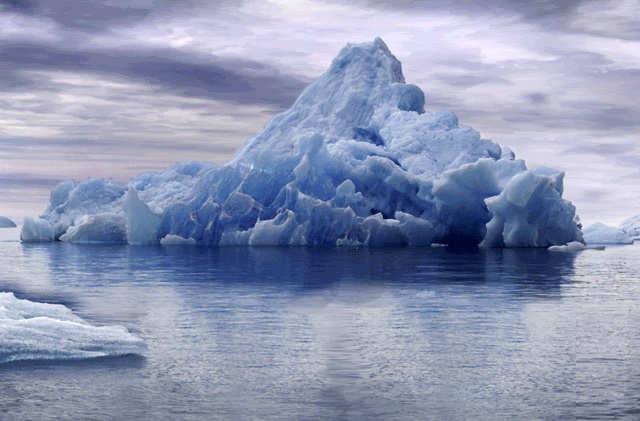The History of Ozone Holes
What role do refrigerators play in it?

The Earth’s thermal balance is such that, without an atmosphere, the average temperature on our planet would be -18°C. However, the current average annual temperature is +15°C. The difference of 33 degrees is attributed to the greenhouse effect. It is interesting to note that during the Ice Age, the average temperature was only 4 degrees lower: one can imagine what Earth would be like at -18°C—an icy sphere, uninhabitable for life.
The Sun emits shortwave radiation, and our atmosphere allows this radiation to pass through entirely. Only harsh ultraviolet rays are absorbed by oxygen. When the Earth heats up, it emits longwave radiation, and our atmosphere is no longer transparent to this type of radiation. Certain gases trap this longwave radiation: about 31 of the 33 degrees of the greenhouse effect is caused by water vapour. Human activity amplifies the greenhouse effect by releasing CO2—measurements of CO2 levels, recorded since 1959, show a continuous increase.
Since the beginning of the century, the average temperature on Earth has risen by 0.75 degrees. This might seem insignificant, but we must remember that a difference of just 4 degrees led to the Ice Ages. Therefore, international agreements have established a temperature rise limit: 2 degrees is the threshold we must not cross. To achieve this, CO2 emissions need to be reduced by 70%. However, this is nearly impossible because it would effectively halt global energy production and, thus, the economy. Consequently, many believe the only solution is to find technological ways to reduce emissions, not the amount of CO2 already in the atmosphere.
Various projects are being developed to address this. Some propose extracting CO2 from the atmosphere and storing it in depleted mines. Another method is planting fast-growing trees that absorb CO2, though these trees need to be buried afterwards. A third method involves reducing the amount of sunlight reaching Earth. This could be achieved by flying into the stratosphere at 10–15 thousand meters and dispersing particles. When a large volcano erupts, ash particles cool the Earth for up to three years after the eruption. By analogy, it is usually suggested to use tiny silver particles that actively reflect sunlight. Of course, this method is not the most convenient. Firstly, silver would need to be constantly dispersed globally. Secondly, if the dispersal stops, there will be a very sharp spike in temperature. Thus, the current climate situation is nearly stalemated. There are no natural ways to combat the CO2 levels in the atmosphere. We are merely waiting and observing as the temperature continues to rise.
Climate change is gradual, and our adaptation to these changes is relatively swift. Humanity has already survived similar warming and cooling periods, so panic is unnecessary. More than 2 degrees of warming already occurred in the Northern Hemisphere between 1000 and 1300 AD. This was when Greenland was discovered and settled, hence its seemingly strange name today. Around the same time, vineyards were growing in England, and wine was produced there—something difficult to imagine today. Later, this warm period was followed by the Little Ice Age, which lasted until the mid-19th century. It was so cold that the Thames regularly froze over.
Climate is constantly changing. Earth alternates between warming and cooling periods because atmospheric circulation fluctuates. The balance of air masses coming from the ocean or forming over continental landmasses can vary. Since the 1970s, warming has been exacerbated by anthropogenic CO2 accumulation in the atmosphere, but the next Ice Age will surely come, albeit in about 10,000 years.
Since 1988, the Intergovernmental Panel on Climate Change (IPCC) has existed. Every two to three years, it publishes reports summarizing all climate research. Many climate models of rising average annual temperatures have been developed. In 2015, the Paris Agreement was adopted, under which each country committed to reducing CO2 emissions. Within this agreement, the temperature rise threshold was announced. For island nations, even a 2-degree increase is too dangerous. If the ocean begins to rise, these islands will experience salinization of groundwater and primary freshwater sources. Therefore, they advocated lowering the official allowable threshold to 1.5 degrees, but this limit needs to be revised and more achievable for other countries.
The highest climate risk falls on countries with small territories. Their entire economy is adapted to specific climate conditions, and with significant climate changes, there is no room for manoeuvre, no space to relocate, for example, agriculture. If the water level rises in the Netherlands, they will have to build more dams. If desertification begins in Africa, it will be impossible to counteract it, and waves of migration will begin. In this sense, the vastness of Russia allows it not to fear climate change.
It is essential to realize that there is yet no natural way to fight climate change. Despite the agreements, Paris’ commitments will lead to a rise in global temperature of more than 3.5 degrees because no country wants to limit itself economically. However, there is hope that humanity will adapt quickly enough to the situation. The world has enormous scientific potential, and biotechnology, for instance, can radically change agriculture. We have time and can maintain an optimistic outlook on the climate change problem.

What role do refrigerators play in it?

Coral reef biologist Nancy Knowlton on Charles Darwin's findings, dinoflagellates, and the consequences of glo...

Geologist Philip Gibbard on Louis Agassiz, the Quaternary, and the Effects of Global Warming